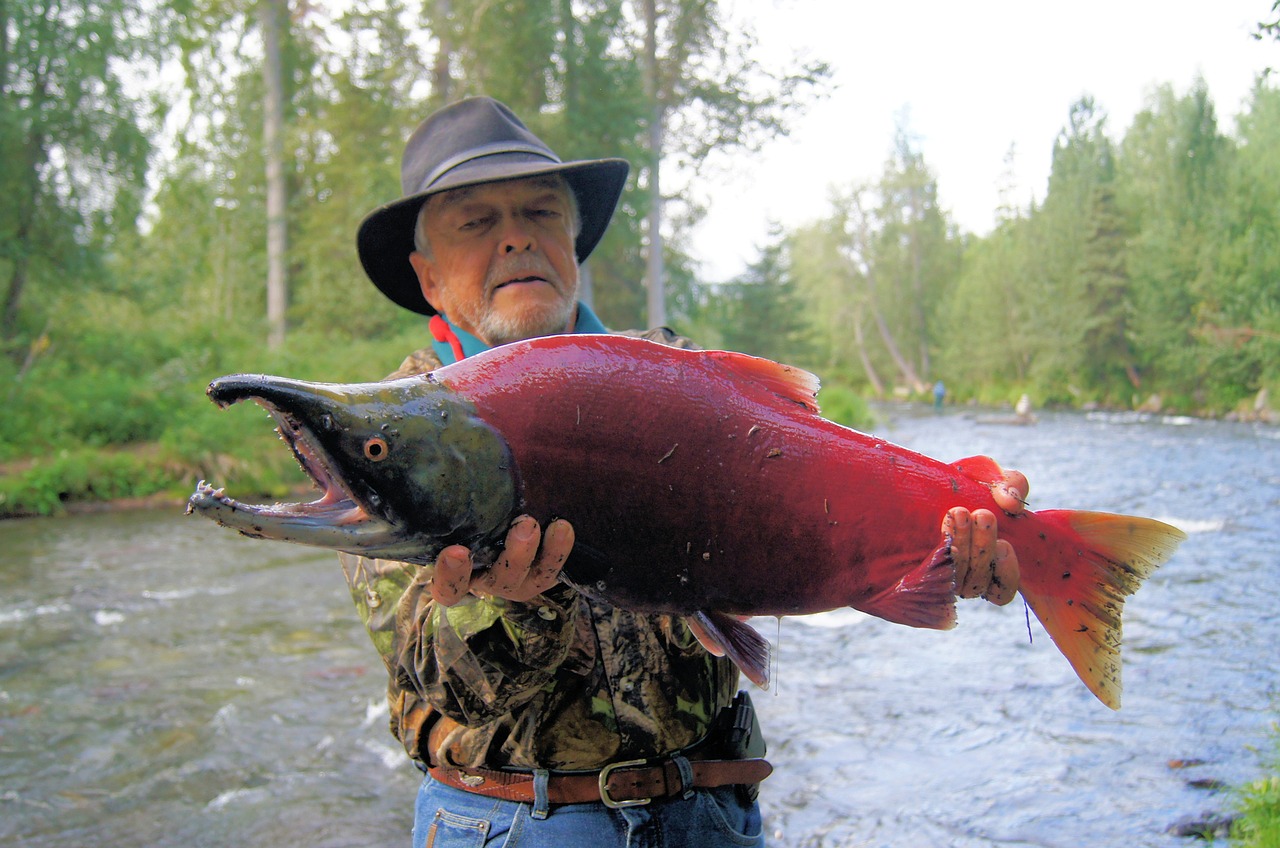During the administration of former President Barack Obama, federal officials described Bristol Bay’s salmon ecosystem as a “national treasure.” Bristol Bay is, in fact, one of the richest natural salmon habitats and fisheries in the world. It contributes some 60 million sockeye salmon annually to the food supply chain.
The bay, situated at the northeast of the Alaska Peninsula, is the site of half a dozen major river basins set against a sprawling and vital watershed. It is home to numerous avian, mammal, and fish species.
The salmon fisheries and affiliated local industries also help support the economies of more than two dozen Native Alaskan tribes. But Bristol Bay is also subject to significant threats to its continued viability as an ecosystem, none greater than the current proposed Pebble Mine operation. Here’s what you need to know:

The Proposal Calls for a Pit Mine and an Earthen-Work Dam
The mine, proposed for construction at the headwaters of two of the region’s major rivers, is designed to be a large-scale, open-pit mine for the recovery of gold, copper, and molybdenum. It would be accompanied by a 60-story earthen-work dam that would serve as a holding place for billions of tons of contaminated water and other toxic materials. Dams of this type have shown a notably poor record of containment over the years.
What’s more, say environmental experts, this contaminated material would not degrade over time, but would remain a permanent, dangerous feature of the landscape. And this contaminated man-made “lake” would be situated only slightly north of Alaska’s largest existing lake, Iliamna Lake, which is among the greatest naturally occurring repositories of sockeye salmon.
The Mine Would Endanger Local Wetlands, Waterways, and Industry
Environmentalists say that the pollutant-heavy mine would present a direct danger to thousands of wetland acres, and to some 80 miles of salmon-rich waterways. It would, they add, result in well over 10 billion gallons of pollutant-rich wastewater delivered every year into critical watersheds in the area. Experts additionally point out that the region’s $1.5 billion annual salmon fishing economy could be devastated by the mine, should it become operational.
More than 14,000 people are employed by Bristol Bay’s salmon fishing industry each year. This includes not only fishermen, but numerous employees in salmon-processing plants as well as deckhands and other marine vessel personnel. Additionally, as much as two-thirds of the protein consumed by Alaskans living in rural areas derives from salmon.
The mine would negatively affect the bay’s $75 million annual tourist economy, which focuses to a great extent on sport fishing amidst ruggedly beautiful landscapes. According to a number of experts, the Pebble Mine issue is the most consequential land-use question placed before the American people and their elected officials in recent years.
The Pebble Mine Application Is Currently Being Fast-Tracked
The corporate group behind the Pebble Mine operation currently has an application under federal government review regarding its clean water usage permit. Inexplicably, in the midst of the current coronavirus pandemic, when nonessential operations can and should be postponed, the United States Army Corps of Engineers is working to expedite this application, even in the face of vital unanswered questions and incomplete data on the extent and degree of associated risk.
The Pebble Mine group still hopes, in the midst of an unprecedented national and international crisis, to see its application fast-tracked and approved by summer 2020. However, it has yet to supply crucial information about the environmental and economic ramifications of its proposed operations.
The Government’s Current Position Is a Reversal from the Prior Administration
In 2014, the Environmental Protection Agency under President Barack Obama, referring to a wealth of peer-reviewed scientific studies, called the proposed mine a potential “catastrophic” disaster in the making. This condemnation was echoed by a broad and deep coalition of former EPA administrators who had served several Republican presidents.
What’s more, about four-fifths of Bristol Bay community residents have consistently opposed the construction of the Pebble Mine. Additionally, four major international mining companies have, after some initial interest, withdrawn from deals to build the mine. Even in the face of such wide-spread, bipartisan concern and repudiation, the current administration is supporting the efforts of poorly-funded Northern Dynasty Minerals, a small Canadian company operating without visible partners, to move the mine project forward.
After meeting with the company’s representatives for only about an hour behind closed doors, the Trump EPA in May 2017 agreed to forsake the scientifically-validated restrictions the previous administration had opted to move forward with under the provisions of the Clean Water Act. Later that same year, Northern Dynasty Minerals filed for its now-pending federal-level construction permits, requesting an expedited response.
A Coalition of Organizations Is Advocating a Review of the Permitting Process
For this reason, a wide coalition of organizations has come together to urge the American people to take up the issue with their Congressional representatives. These entities are asking members of Congress to put a stop to the current permitting process in order to conduct an appropriate review when officials can better investigate and vet the mine’s proposed operations.
Groups like Defend Bristol Bay, the Portland, Oregon-based Wild Salmon Center, and the Natural Resources Defense Council are continuing to advocate for a truly comprehensive federal review of the Pebble Mine project. Their goal is to preserve the viability of one of the world’s greatest salmon fisheries—and the livelihoods and wellbeing of the people who depend on it.
